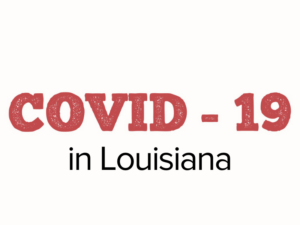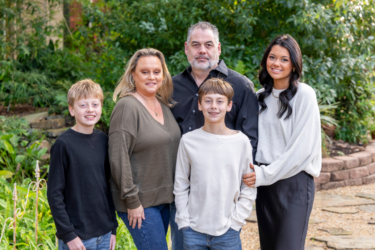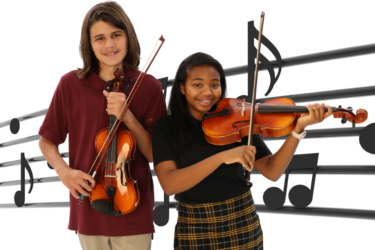While it certainly may seem like it happened a very long time ago, it was in fact only a year ago this month that we received news of the first presumptive case of COVID-19. By March 16, 2020, we were instructed to stay at home. Schools went virtual, restaurants transitioned to takeout or delivery only, and gatherings of groups were limited. Masks were to be worn when out to retrieve essential items, handshakes were replaced with elbow taps, and practicing social distancing became our norm.
While we didn’t know what to expect then, we have come a long way since March 2020. Here are a few of the things we learned, things that have changed for us, and where we are at with some of the latest developments.
EDUCATION
The turnaround was quick when schools had to transform their face-to-face learning environments into virtual classrooms. Ensuring that children had laptops, Internet access, and even meals during the day were only a few of the thoughts running through administrators’ and teachers’ minds. However, everyone rallied together and helped make it all possible. Learning continued for students, and parents jumped in as assistant teachers, providing some normalcy for students who were all experiencing a shift in their lives. We discovered a new level of respect for teachers and all they do for our students because the struggle was real. Learning loss became more prevalent, but luckily, students were soon able to return to school. Many schools have now returned to their face-to-face learning, with social distancing being practiced and masks being worn.
VACCINES
Developing a vaccine is a long process, but with COVID-19 spreading at a fast rate, the Department of Health and Human Services introduced Operation Warp Speed in order to accelerate the development of COVID-19 vaccines. A year ago, we didn’t have a vaccine, but now, the FDA has granted emergency use authorizations for two COVID-19 vaccines: Pfizer and Moderna. The Centers for Disease Control and Prevention (CDC) provides a list of persons who are eligible to receive the vaccine right now in Louisiana. This list includes those
who are:
- People 65 and older
- Dialysis providers and patients
- Pregnant people
- People 18-64 (or 16+ for Pfizer vaccine only) with at least one of the conditions listed below by the CDC.
- Cancer
- Chronic kidney disease
- COPD (chronic obstructive pulmonary disease)
- Down syndrome
- Heart conditions including but not limited to heart failure, coronary artery disease or cardiomyopathies
- Immunocompromised state (weakened immune system) from solid organ transplant
- Obesity (body mass index [BMI] of 30kg/m2 or higher
- Sickle cell disease
- Current or former smoker
- Type 2 diabetes mellitus
- Asthma (moderate-to-severe)
- Cerebrovascular disease (affects blood vessels and blood supply to the brain)
- Cystic fibrosis
- Hypertension or high blood pressure
- Immunocompromised state (weakened immune system) from blood or bone marrow transplant, immune deficiencies, HIV, use of corticosteroids, or use of other immune weakening medicines
- Chronic liver disease
- Overweight (BMI > 25 kg/m2, but < 30 kg/m2)
- Pulmonary fibrosis (having damaged or scarred lung tissues)
- Severe neurologic conditions such as dementia
- Thalassemia (a type of blood disorder)
- Type 1 diabetes mellitus
ldh.la.gov
ENTERTAINMENT
In hard times, we often look to the things we find entertaining as a way to help us cope. Unfortunately, concerts, movie theaters, sports arenas and live performances had to be shut down or canceled in order to help slow the spread of the virus. We found ourselves reaching for our phones a lot more in 2020, and before long, the performances and shows went virtual too. Sports started to return in bubbles with limited capacity, live performances were streamed online, and movies that we looked forward to seeing on the big screen were made available to us right from our own couches. Eventually, movie theaters opened once more, showcasing old favorites and spaced out seating between guests.
MASKS
Wearing a mask was rare in Louisiana a year ago, unless it was Mardi Gras or Halloween. Wearing a mask is now a part of our daily lives. Before we venture out from our homes, we find ourselves reaching for our masks just as easily as we would make sure we had our keys, wallets, and phones before we left the house. An estimate on when we could return to mask-less living can’t be given, but we’re going to continue doing our part
to help keep the spread slow.
WORK
When the stay-at-home order went into effect, many of us who weren’t considered essential workers found out just how possible working from home was. While navigating between children in virtual learning and the Monday morning Zoom meeting was something we never thought we would be doing, it quickly became our new norm for most of 2020. With Louisiana in a new phase, more of us have been able to return to our office buildings, and we were quite excited to venture out of our homes for a new (old) work setting, all while following safety protocols.
DINING AND SHOPPING
Going out to dinner with family and friends or grabbing lunch with coworkers experienced a major change as well during the pandemic. Many restaurants were required to switch to take out or delivery options for a while. When this happened, apps like Waitr, DoorDash, and GrubHub skyrocketed in number of users. Meals were delivered directly to homes and left safely on doorsteps with no-contact delivery. Grocery stores also joined the apps, allowing families to order the items they needed while being able to stay home. Shopping online also experienced a boom. It was one of the first holiday seasons where instead of Cyber Monday, it was more like Cyber Everyday. Dining is now available at several locations, both indoors and outdoors, and many people are returning to the stores to pick up their own items. However, the apps are still popular as we continue navigating through this pandemic.
Looking back gives us an opportunity to not only recognize some of the things we have gone through during 2020, but it also gives us a chance to showcase just how far we have come. For a while there, we didn’t know if there would be a light at the end of the tunnel. We didn’t know if we would be able to return to some normalcy. We experienced a variety of emotions and losses, and we all really learned a lot throughout 2020. While we are still on this long journey together, we can at least look back and know that we’ve come a long way from where we were and what we knew then. ■





